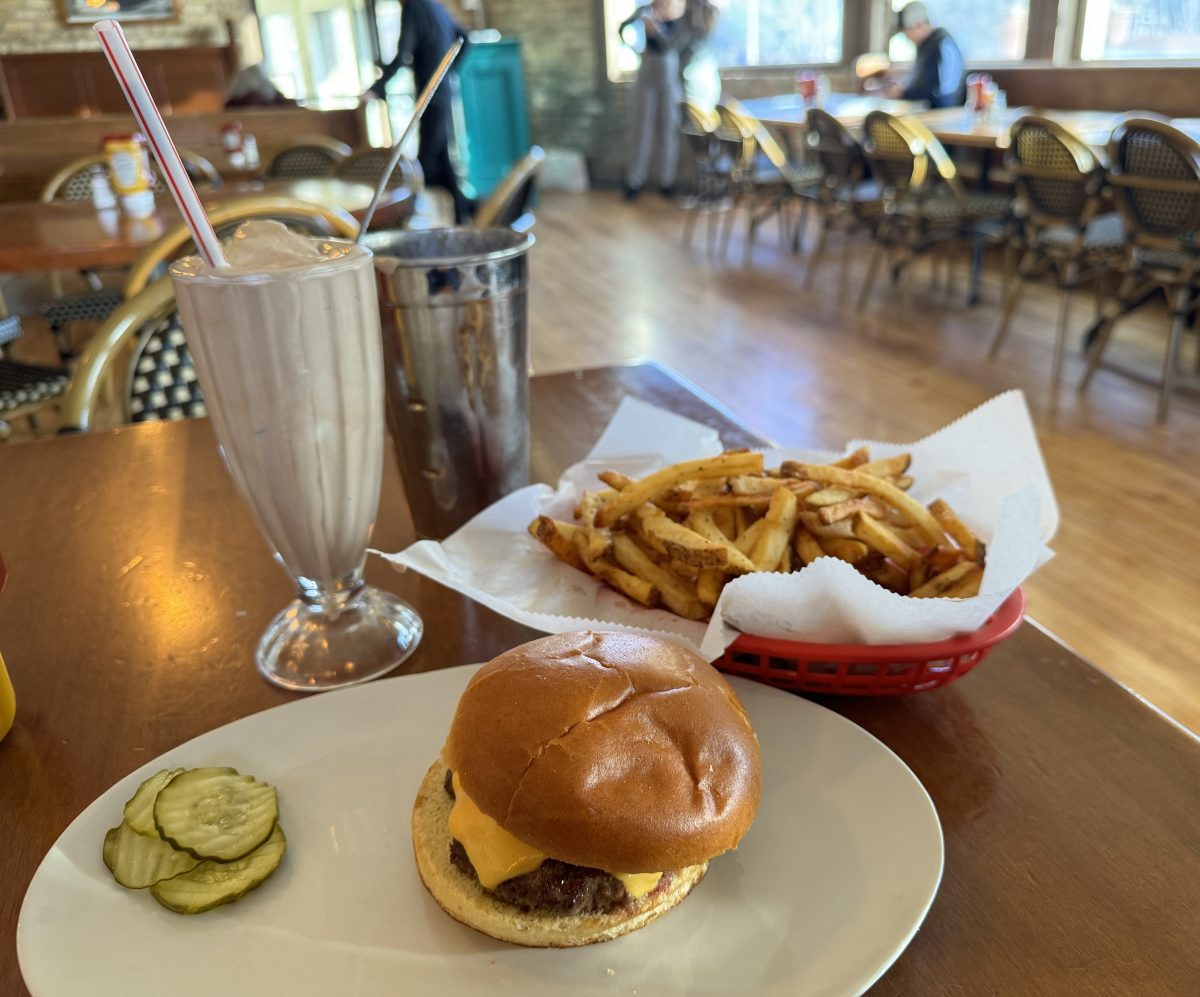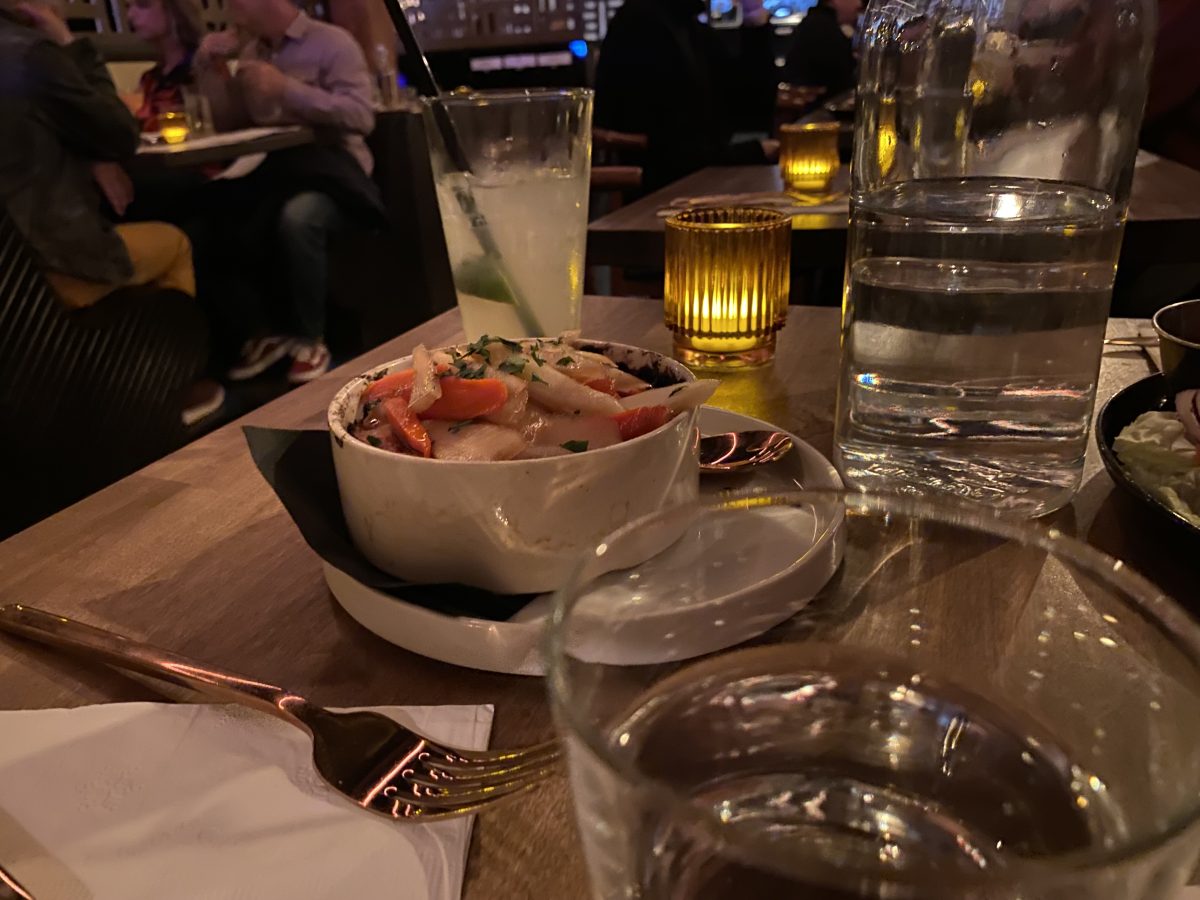Who’s tougher than someone who can throw down in the kitchen? Someone who knows their way around a broiler and can dice an onion in seconds flat? No one messes with a dude who can whip up a filet mignon like it’s nothing. Learning to cook helps you eat better, save money and look stone cold impressive in the process. Start weaning yourself off frozen pizzas and Lunchables by outfitting your kitchen with the right tools and cooking staples.
Cookware
Don’t be the punk hacking at a fine cut of meat with a butter knife — get yourself a proper blade. Most cooks use one or two knives for nearly all of their cutting. A six-or-so inch blade on a chef’s knife will serve you well for years to come. Both Dexter Russell and KitchenAid make quality beginner’s knives for under $15.
If you intend on cooking frequently, however, keeping your knife blade honed with a sharpener will be necessary. Basic sharpeners are cheap and simple to use. Honing steels, the long metal rods used for sharpening knives, require more technique and won’t be necessary until you upgrade to a pricier knife set.
While some chefs fuss over the hygienic qualities of wood versus plastic cutting boards, the choice really comes down to personal preference. Just avoid a flimsy plastic cutting board; they’re too flexible and liable to slide around on a counter.
Crucial for cooking of every kind, a sturdy frying pan will quickly become your best friend. Ideally, a frying pan should be built like a Buick: durability and a heavy bottom are both key.
Though gourmands endlessly champion the virtues of stainless steel and cast iron cookware, a simple non-stick coated pan will save you hours of scrubbing egg residue while sacrificing only a little longevity. The T-Fal line of pans, stocked at Target, provide a number of sturdy options that will hold their own alongside higher priced competitors.
The exact specifications of your sauce pan are less important. Chances are, whatever you use to boil your ramen will suffice.
If you’re serious about saving money by cooking, you’ll need to start loving leftovers. Always make sure you have plastic wrap, Ziploc bags and Tupperware on hand to minimize your waste in the kitchen. Remember, there’s no shame in buying off-brand — somebody needs to keep the good people at Roundy’s clothed and fed.
Foodstuffs
Don’t mess around with those chintzy shakers or expensive sea salts. Grab the cheapest, plainest tub of salt you can find — Morton comes Ron Swanson recommended. Get accustomed to using a lot of it.
Pepper is a different matter, though. Whole peppercorns stay fresh longer than the pre-ground variety, so invest in a grinder. Just make sure to refill it with whole peppercorns rather than buying new grinders every time.
Though they may seem obvious for baking enthusiasts, it’s important for cooks of all kinds to have large stocks of flour and sugar at their disposal. Flour can also coat meat before frying or thicken sauces, whereas sugar, predictably, sweetens dishes.
Few sections in the grocery store appear more daunting than the wall of olive oil. Labels featuring men with pencil mustaches and fancy Italian words obscure what’s important: which brands strike the perfect balance between price and quality. Filippo Berio extra virgin olive oil and Goya are affordable options that still retain the healthy qualities that make olive oil a kitchen staple.
As essential as its olive counterpart, vegetable oil comes with none of the purchasing hassles. You should opt for the cheapest bottle available as it is used primarily as neutral frying oil and occasionally in baking.
If you plan on cooking any East or Southeast Asian dishes, you’ll need soy sauce readily available. As with olive oil, brand matters. A good soy sauce can add an unmatched salty and savory quality to a dish. Kikkoman is widely available, cheap and more flavorful than its equally priced competitors.
Spices and Herbs
Depending on your exact tastes, the makeup of your spice rack will vary. Even still, there are a number of core spices and herbs that should make their way into any chef’s kitchen.
Cumin and coriander, for instance, form the backbone of many Latin American, Indian, African and Middle Eastern dishes. Chili powder helps add a spicy kick to curries and dry rubs. Red pepper flakes do the same for many Italian meals. Herbs like dried oregano, rosemary, thyme and parsley all bolster the flavor of soups, sauces and other slow-cooked meals. Small pinches of cinnamon add a unique quality to baked goods and drinks as well as Indian and Middle Eastern curries.
Getting your kitchen in order is the first step to culinary independence. These essentials will come up time and time again in recipes and having your pantry stocked will lessen your week-to-week burden. They may seem like a modest start but they’re building blocks nonetheless. After all, every Iron Chef had to start somewhere. I bet Bobby Flay once had to buy a tub of salt from Rainbow.
















